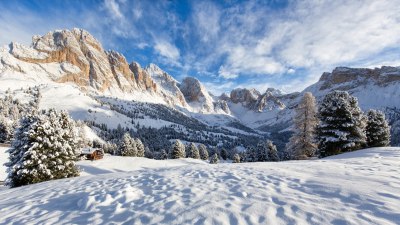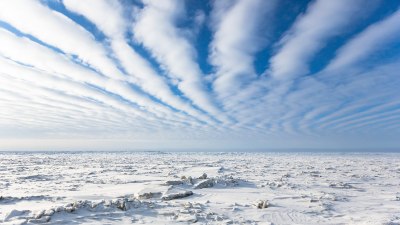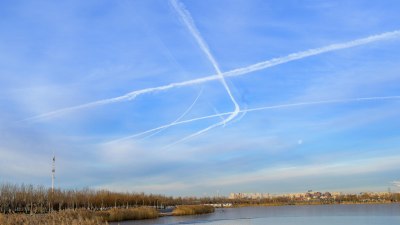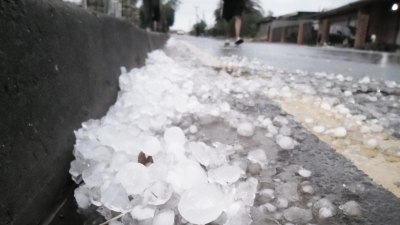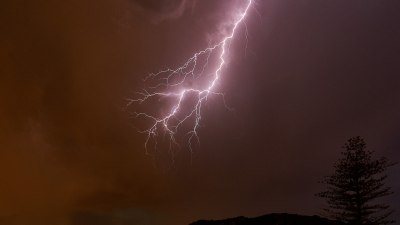Why Some Clouds Look Like Waves
Discover the fascinating reasons behind wave-like cloud formations and their mesmerizing aesthetics.
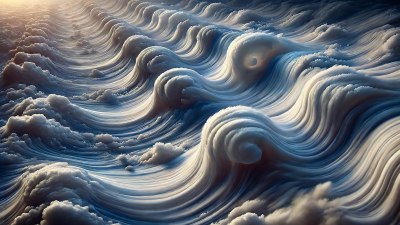
This image was created with the assistance of DALL·E
Clouds are an ever-changing canvas in the sky, offering a dynamic view that can inspire wonder and curiosity. While clouds come in various shapes and sizes, some display a striking resemblance to ocean waves. These wave-like clouds are not just a beautiful spectacle; they are the result of specific atmospheric conditions, dynamics, and processes that are integral to meteorology. By examining the science behind these cloud formations, we can gain greater appreciation of their beauty and understand the environmental phenomena that create them.
Having a keen interest in understanding weather patterns is essential for enhancing our knowledge of nature; it helps us interpret signals from the sky. Wave-like clouds can be formed due to numerous factors including wind patterns, temperature changes, and humidity levels. These aspects act together to create extraordinary visual effects resembling waves, ripples, or even layers in the atmosphere.
The Science Behind Cloud Formation
Clouds form when water vapor in the atmosphere condenses into tiny liquid droplets or ice crystals. This process usually occurs when moist air rises, cools, and then reaches a point of saturation. At this moment, the water vapor condenses around particles in the air – such as dust or pollutants – to form clouds. Different types of clouds result from variations in temperature, altitude, and humidity, leading to diverse shapes, textures, and colors.
Wave-like clouds frequently belong to the Stratus or Altocumulus cloud categories, both distinguished by their layered structure. Understanding these cloud types is crucial for comprehending why some clouds look like waves.
Stratus Clouds
Stratus clouds are low, gray clouds that can cover the entire sky, resembling fog. What makes them interesting in the context of wave formations is their ability to create smooth layers. If the air rises in gentle waves or undulating patterns, the stratus clouds can take on a wave-like appearance as they spread. These clouds can also create a dramatic effect when bathed in sunlight, diffusing the light and creating softer gradients reminiscent of ocean waves.
Altocumulus Clouds
On the other hand, altocumulus clouds are mid-level clouds that often appear as white or gray patches, waves, or rolls on summer days. They can develop quickly when the atmosphere becomes unstable, and they tend to form in groups or patches instead of isolated clouds. This creates unique patterns in the sky, with undulating lines that vividly resemble the peaks and troughs of ocean waves. When formed, they signal the potential for a weather change, particularly if the patterns are prominent.
Wave Patterns in the Atmosphere
In addition to the types of clouds, the underlying atmospheric conditions play a significant role in the formation of wave-like shapes. The most significant mechanism behind wave-shaped clouds is atmospheric waves. These waves develop when airflows interact with geographical features, like mountains or valleys, or due to thermal convection. As the air rises and falls, it can create oscillations that manifest visibly in the cloud formations.
One notable phenomenon is the orographic lift, which occurs when a moving air mass encounters a mountain. When the air ascends on the windward side, it cools and can lead to cloud formation in waves. As the air descends on the leeward side, it warms again, often leading to clear skies underneath. This creates a captivating contrast of wave-like clouds on one side with a clear atmosphere on the other, akin to waves crashing against a shoreline.
Roll Clouds
Another fascinating example of wave-like clouds is roll clouds. Roll clouds are low, horizontal tubes of cloud that form when air rises and cools rapidly. They can appear to ‘roll’ along a horizontal axis, creating a stunning visual resembling waves breaking on a beach. Roll clouds are often associated with cold fronts or the leading edge of thunderstorms. Observing a roll cloud can be an exhilarating sight as it appears to barrel across the sky, creating an atmosphere that hints at tumultuous weather ahead.
Undulatus Asperatus Clouds
Among the most dramatic of wave-like clouds are undulatus asperatus clouds. This type of cloud formation looks strikingly like turbulent sea waves, exhibiting swirling patterns that roll across the sky. Their formation is quite complicated, as they arise from instability within the atmosphere and require specific conditions to develop. Undulatus asperatus tends to precede storm systems and can cast a surreal atmosphere, evoking a sense of awe and wonder in observers. They are a relatively recent classification in meteorology and showcase the intricacies of atmospheric processes.
Mythology and Inspiration
Beyond their scientific explanation, wave-like clouds have inspired endless fascination and mythological symbolism across cultures. Many cultures attribute magical or spiritual significance to cloud formations, viewing them as messengers or omens. Their resemblance to waves often invokes themes of change, fluidity, and natural beauty. Indeed, many artists and poets have sought to capture the ephemeral beauty of wave clouds, incorporating them into their works to convey emotion or to symbolize the transient nature of life itself.
Artists have long found inspiration in the skies, and the configurations of wave-like clouds have appeared in paintings, literature, and photography. The interpretation of clouds offers a unique lens through which we can appreciate the broader environmental changes taking place and the significance they carry.
In conclusion, the wave-like appearance of certain clouds encapsulates the beautiful and intricate interplay of atmospheric dynamics, geography, and temperature variations in the environment. Whether they manifest as stratus, altocumulus, or unique formations like undulatus asperatus and roll clouds, their wave patterns inspire wonder and serve as reminders of nature's complexity. As we continue to explore the skies, we are not only observing meteorological phenomena but also reflecting upon the beauty and fragility of our planet. Appreciation for these mesmerizing wave-like clouds fosters a deeper understanding of the environment and fuels our curiosity to know more about the dynamic world around us.
